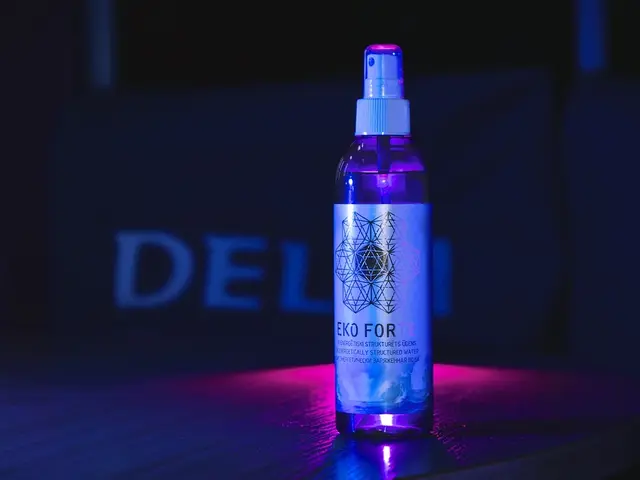Nipple discolorations: Understanding origins, indicators, and remedies
In the realm of breast and nipple health, various changes can occur, some of which may cause concern for individuals. This article aims to shed light on these changes, their potential causes, and when to seek medical advice.
One common issue is the development of a blocked duct, which can lead to complications such as mastitis and breast abscesses. On the other hand, a change in the size and number of Montgomery glands can be an early sign of pregnancy. These glands, which become more visible during pregnancy, contain an oily substance that helps newborns locate the nipple and encourages feeding.
Montgomery glands can also manifest as small, white bumps on the areola known as Montgomery tubercles. These are harmless and require no treatment. However, other white spots on the nipples and areolas may signal less common conditions, such as eczema, Hidradenitis Suppurativa, acne variants, keloid or hypertrophic scarring, rare skin conditions, or even herpes.
Herpes, a sexually transmitted disease, can cause white spots on the nipples. The herpes simplex virus causes herpes, and the mother can pass it from the birth canal to the newborn's mouth and eyes. Swift treatment is crucial to prevent serious consequences for the baby's health.
Another issue is a blocked nipple pore, which can result in a milk blister or blebs. These can be painful but usually clear during a baby's next feed. A blocked nipple pore may need to be reopened using a sterile needle, but this can introduce infection if not done carefully.
Subareolar abscesses, buildups of pus in the breast tissue, are another concern. These are not always linked with breast-feeding and can also be caused by bacteria that enter the breast tissue through a wound, such as acne or a nipple-piercing. Subareolar abscesses often require a course of antibiotics. In some cases, if they do not heal, an operation to drain pus from the breast tissue or completely remove a duct may be necessary.
Lastly, thrush, a fungal infection, can cause white spots on the nipples. Newborn babies can develop thrush in the mouth and then infect the mother's nipples when breast-feeding. For thrush, both mother and baby are treated with antifungal medication.
It is essential to seek medical advice if a breast becomes red or inflamed, a person feels unwell, develops a high temperature, or is worried about symptoms they have, as these could indicate mastitis or an infection. Herpes can have serious consequences for the baby's health, and so swift treatment is vital.
In conclusion, understanding the various changes that can occur in breast and nipple health is crucial. While some changes are normal, others may indicate underlying issues. If in doubt, always consult a healthcare professional to ensure prompt and appropriate treatment.
- Ulcerative colitis, a type of inflammatory bowel disease, is not typically connected to breast and nipple health, but it's worth mentioning in discussions about overall health-and-wellness.
- Skin conditions such as atopic dermatitis, psoriasis, and eczema can sometimes manifest on the skin-care areas like the nipple and areola, displaying symptoms similar to white spots.
- Predictive models in science can help identify risk factors for diseases like diabetes, asthma, and cancer, yet they cannot foresee every health complication that may emerge in breast and nipple health.
- Depression, a mental-health issue often affects women's health disproportionately; it's essential to recognize the signs, such as persistent sadness or changes in appetite, which could indicate a need for professional help.
- A rare skin condition, Hidradenitis Suppurativa, can present itself as white spots on the nipples and areolas, often causing discomfort and requiring medical attention.
- In some cases, breast cancer may not display any visible symptoms, making regular check-ups and medical screening an essential part of women's health.
- While not directly connected to breast and nipple health, it's worth mentioning that diabetes management is critical for maintaining overall well-being, including heart health, mental health, and skin care.
- In the realm of skin-care, wearing comfortable and breathable clothing can help prevent conditions like heat rash or sweat dermatitis that might affect the breast and nipple area.
- Maintaining good physical and mental health is key for overall wellness, and while this article primarily focuses on breast and nipple health, it is always crucial to prioritize overall health awareness and regular medical check-ups.







